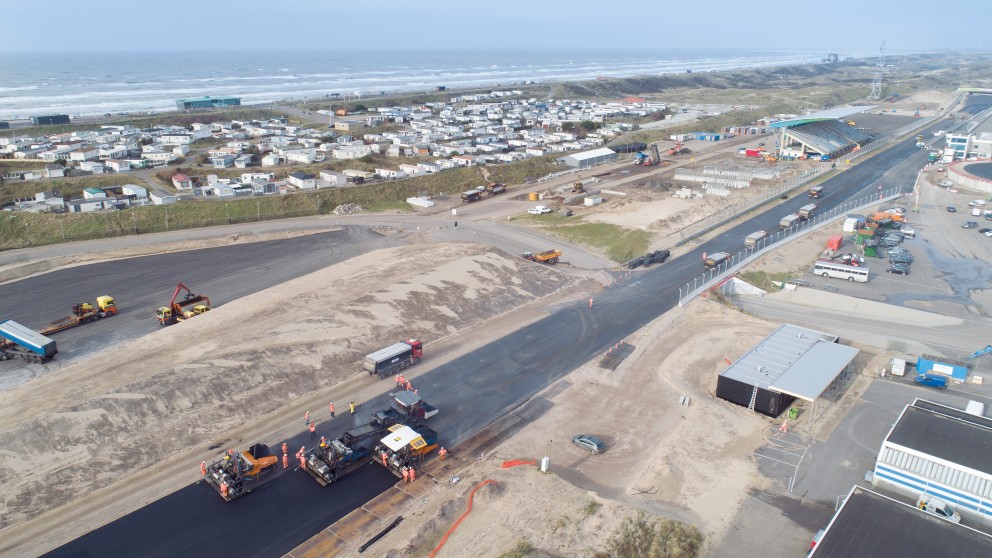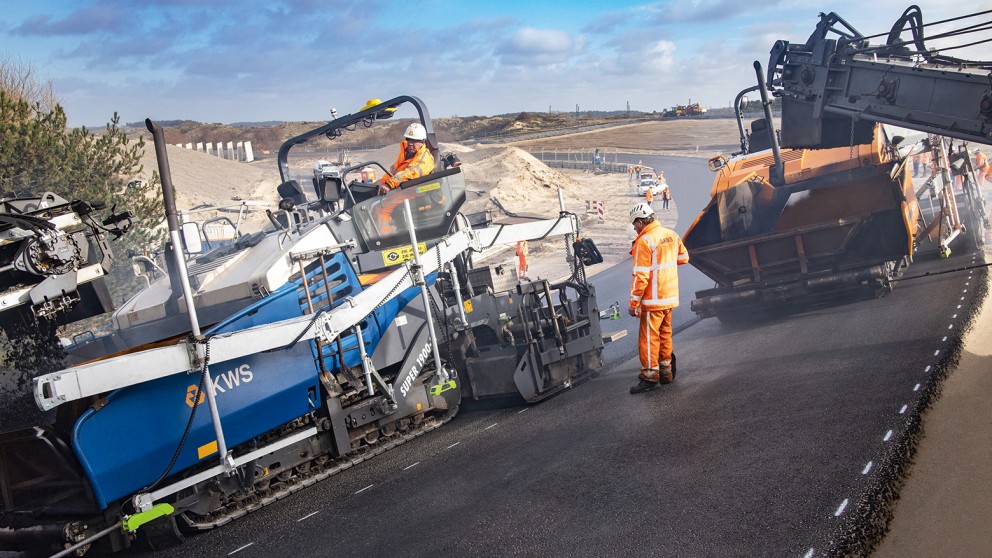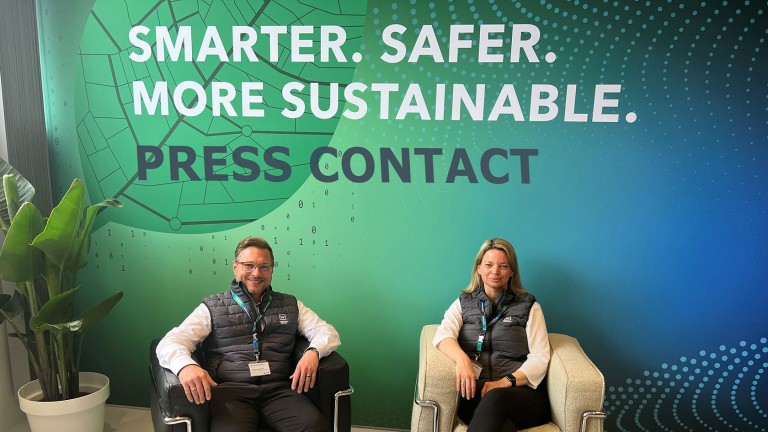Maximum precision for Formula One
Three VÖGELE pavers have modernized the Circuit Zandvoort in preparation for the Dutch Grand Prix. The project was very demanding since it included the addition of two steeply banked turns that were up to 32%, requiring a tolerance of ±2 mm (0.79 in). To satisfy the demands of the job, the contractors made full use of the intensive application consulting services provided by the Wirtgen Group experts.

Legendary racetrack on the North Sea coast: Ahead of the Dutch Formula One Grand Prix, Circuit Zandvoort has been modernized and had two steeply banked turns added.
180 degree bends and massive height differences: With its many hills and twisting turns, the just over two-and-a-half mile Circuit Zandvoort is a extremely challenging racetrack – not just for drivers, but for road construction professionals too. Before the return of Formula One to the circuit in September 2021 and after a 36-year break, the “rollercoaster in the dunes” located right on the coast of the North Sea had to be partially rebuilt and renovated. Plans for the new layout included the partial construction of two new steeply banked turns along with the rehabilitation and modernization work. The two banked turns are designed to encourage overtaking and enable higher cornering speeds, so the race cars emerge faster onto the straight.
Expert partner required
The demands on the method for road construction were correspondingly high. Only special paving mixes meeting the highest standards of the World Motor Sport Federation FIA were allowed. The banked turns had to provide a slope of up to 32%, keeping to a precision tolerance of ±2 mm (0.79 in). Filippo Piccoli, technical manager of engineering firm Studio Dromo which planned the rebuild, describes the project requirements as “the most extreme racetrack construction I have ever seen and been involved with.” That's also why the contractors, Van Kessel B. V. and KWS Infra B. V., both part of Royal VolkerWessels N. V., made full use of the comprehensive application consulting services and on-site support provided by the WIRTGEN GROUP, as well as the matching high-performance machinery: three VÖGELE SUPER 1900-3i pavers in combination with the AB 500 TV extending screed and HAMM rollers from the HW, HD, HD+ and HD CompactLine series.

On the complex rehabilitation project, the contractors deployed three VÖGELE SUPER 1900-3i pavers in combination with the AB 500 TV extending screed.
Trial run before paving
In preliminary discussions with the WIRTGEN GROUP experts, the project parties decided to first run a trial. This allowed the paving team to work through the specific challenges on-site, ensuring that the actual paving operation on the track all went smoothly. Ultimately, the two banked turns were built with a crossfall of as much as 32%, making them even steeper than the corners on high-speed oval tracks in the USA. It was vital to the success of the project that everyone involved knew exactly what factors to consider when setting up the machinery and running the process.
Powerful pavers, expert users
As is the standard requirement on racetrack construction sites, the paving was carried out using the "hot on hot" method, meaning with no central seam. André Felchner, head of applications engineering at VÖGELE, personally oversaw the preparations and the asphalt work. "These highly complex tasks are what we do. Of course, there's a lot to consider ensuring that the asphalt paving and compaction are successfully executed on a road as extreme as this one," Felchner says. "So it's all the more enjoyable to encounter a paving team as highly skilled and motivated as this one. The guys quickly grasped what it was all about."

Tolerance of just ±2 mm (0.79 in): The pavers also had to perform precision work on the steep bends, and were equipped with the Big MultiPlex Ski from VÖGELE for the purpose.
Big MultiPlex ski for optimal evenness
The tolerance of just ±2 mm (0.79 in) on the steeply banked turns posed a challenge. The three SUPER 1900-3i pavers had to deliver precision work and were equipped with the VÖGELE Big MultiPlex Ski for the job. The sensor system is ideal for applications demanding absolute longitudinal evenness. The paving team attached three multi-cell sonic sensors to its variable 5 to 13 m (16 ft 5 in to 42 ft 8 in) long carrier beam. This enables the Big MultiPlex Ski to scan a reference at several points located at a distance from one another. The Niveltronic Plus System for Automated Grade and Slope Control calculates a mean from the measurements taken across the entire measuring range, making up for any unevenness over long distances.
Screed Assist key to success
Another special feature of the track was the specific profile. Despite this, the VÖGELE machinery needed only minor adjustments in order to pave the steeply banked turns. "To achieve a high-quality, precompacted result on the extreme slope, only a slight negative crown profile had to be created," says Felchner. On banked turns, the pressure on the screed on the inside of the bend is naturally greater due to the slope. The paving team deployed the Screed Assist feature to ensure the mix was laid evenly across the entire width. On VÖGELE pavers, it can be adjusted separately for each side of the screed. This reduced the pressure on the inside of the bend, delivering a homogeneous paving result. "Everything worked out as we had planned it together with our partners from the Wirtgen GROUP. That gives us the confidence to know that we can also count on their support on our next tough project," commented Mark van Kessel, site manager, Gebr. Van Kessel B. V.

Public Relations
Reinhard-Wirtgen-Straße 2
53578 Windhagen
Germany